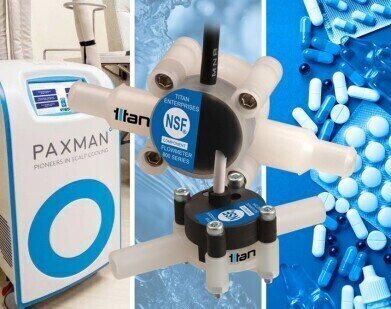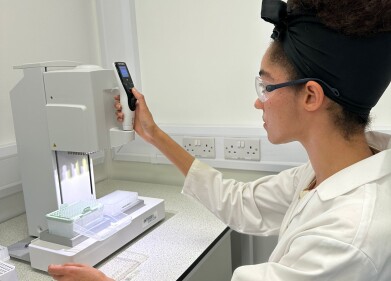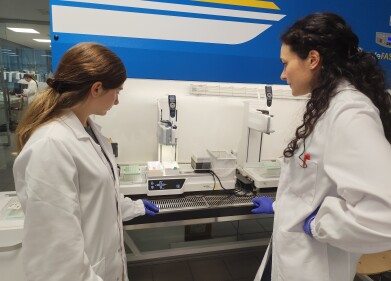Liquid Handling
Exploring the relationship between repeatability and accuracy of flowmeters
Feb 01 2024
The increasing need for precision in flow measurement has driven a surge in demand for high-accuracy meters. Factors such as stringent government regulations and the requirement for more precise measurements in critical applications contribute to this growth. Manufacturers like Titan Enterprises are actively investing in research and development to incorporate new technologies, such as enhanced sensor technology, advanced signal processing algorithms, and improved calibration methods, to boost the accuracy and performance of their flow measuring instruments.
A crucial element of Titan Enterprises’ R&D involves assessing the performance of their flowmeters and implementing enhancements in product design and materials. This process aims to improve both the accuracy and repeatability (reliability) of these flow measurement devices.
“A high-quality flowmeter, carefully produced with a design and construction to tight tolerances and with high-quality materials as well as low wear and fatigue characteristics, is a precise meter with a quantifiable value of repeatability.” (R.C. Baker, 2016).
Repeatability and Accuracy are distinct terms used to define the performance and quality of a flowmeter.
So, what is repeatability?
The typical definition is the flowmeter's capacity to generate consistent results in repeated runs under identical operating conditions. Repeatability is frequently determined by the instrument's design, and without excellent repeatability, a flowmeter cannot display good performance.
At Titan Enterprises, the calibration rigs are set to record a specific number of pulses based on the meter type. The flow rigs precisely interpolate both the rig and meter pulses, rejecting any reading that falls outside pre-established limits, typically set at 0.1% of repeated points. Repeatability is quantified as a ± percentage.
At lower flow rates, there is a potential for repeatability to decline. Manufacturers may choose to express this value as a percentage combined with a constant uncertainty value, or as a percentage of the full-scale reading, rather than a percentage of the measured flow rate.
Titan's small turbine flow meters, known for their exceptional repeatability (±0.1%), find successful applications in batching processes and dispensing within various sectors including food and beverage, chemical, medical, and laboratory. These meters are well-suited for dosing systems and offer the convenience of in-situ calibration.
What is accuracy?
The accuracy of a flowmeter pertains to the quality of the measurement device and its proximity to the true flow value. Accuracy is commonly regarded as a qualitative term, with linearity and uncertainty measurements serving as quantitative indicators that define the accuracy of a flowmeter.
Linearity is typically characterised by indicating the maximum deviation of the reading across a specified flow range (e.g., ±1% of flow rate). It represents the flow meter's capability to stay within designated limits throughout its entire flow range determined by its design. The customary expression for linearity is the error of reading. Another commonly employed alternative in certain industry sectors is the percentage of full-scale deflection or FSD.
Measurement uncertainty refers to the potential error in calibration, defining the range of values where the true values may lie with a specified probability. Acknowledging the inherent margin of error in any measurement, this uncertainty is expressed as a ± percentage.
Precise flow rate measurement is impacted by various variables, encompassing pressure, temperature, density, and viscosity of the fluid. A comprehensive calibration record typically incorporates all these factors. Leading calibration facilities assert a measurement uncertainty as impressive as ±0.02%, though it is more commonly around ±0.1%, particularly when these variables are properly controlled.
In general, the inclination toward more accurate flow meters is anticipated to persist as industries progress, spurred by the escalating need for precise measurements in crucial applications. This progression is motivated not solely by regulatory mandates but also by the continuous pursuit of process optimisation, efficiency enhancements, and elevated product quality across diverse sectors.
More information online
Digital Edition
Lab Asia 31.6 Dec 2024
December 2024
Chromatography Articles - Sustainable chromatography: Embracing software for greener methods Mass Spectrometry & Spectroscopy Articles - Solving industry challenges for phosphorus containi...
View all digital editions
Events
Jan 22 2025 Tokyo, Japan
Jan 22 2025 Birmingham, UK
Jan 25 2025 San Diego, CA, USA
Jan 27 2025 Dubai, UAE
Jan 29 2025 Tokyo, Japan




















